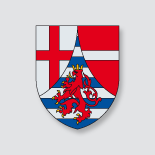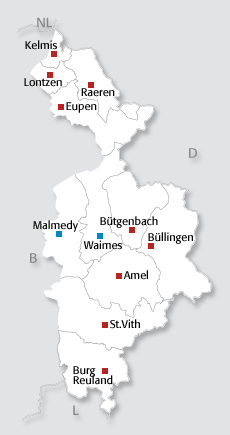Büllingen´s History
 From 58 B.C, the area of today’s community was part of the Roman Empire, the Roman road Cologne-Reims crossed through this region.
From 58 B.C, the area of today’s community was part of the Roman Empire, the Roman road Cologne-Reims crossed through this region.From 450 to 600 AD, the Franks settled in this area. After 648, the monks Christianized the area and built the abbey of Malmedy.
In the 8th century, a Franconian court was constructed in Büllingen.
Büllingen was first mentioned as “Villa Bollingen“ by the abbey Echternach in 789/790.
Emperor Otto I issued a document to “Bullinga“ in 940.
Around 1200, Büllingen became part of the Luxembourg dominion and was part of the “Holy Roman Empire of the German Nation“ after 962. Today, Manderfeld remains part of the electorate Trier.
Other Affiliations:
- Burgundy (1430-1477)
- Habsburg (1477-1555)
- Spanish Netherlands (1555-1714)
- Austrian Netherlands (1714-1794)
The region was destroyed during the 30-year war, 1618 – 1648.
Büllingen falls under French dominion in 1794 and becomes part of the Département de l'Ourthe, Manderfeld becomes part of the Département de la Sarre.
During the Vienna Congress of 1815, the whole region is given to the kingdom of Prussia.
Büllingen’s importance as a market town increases during the 19th century.
Towards the end of the 19th century, the emigration rate increases due to bad harvests. In 1920, after World War I, the area is annexed by Belgium.
The annexation by the Third Reich is reversed in 1945.
During the Ardennes Offensive of 1944-1945, Büllingen and Rocherath were almost completely destroyed; many people lost their lives.

